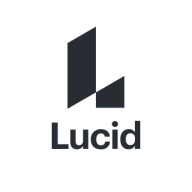

Lucidchart and Lucidspark both compete in the visual collaboration tools category. Lucidchart has an edge in extensive integration capabilities and detailed process visualization, while Lucidspark excels in live collaboration and real-time brainstorming.
Features: Lucidchart offers robust visual features with charting for complex processes, seamless integration with tools like Slack and JIRA, and an intuitive design for process visualization. Lucidspark provides a virtual whiteboard experience, allows for live contributions from multiple users, and supports dynamic brainstorming sessions with ease of use.
Room for Improvement: Lucidchart could enhance its design and presentation features with more automation and colorful visuals. Improvements in layer management and sharing permissions are also desired. Lucidspark users seek more advanced learning resources, simpler navigation, and better integration with Microsoft 365. An easier onboarding process through tutorials and enhanced functionality for remote collaboration are required.
Ease of Deployment and Customer Service: Both Lucidchart and Lucidspark are praised for their cloud deployment, offering easily accessible services. Their user-friendly design minimizes reliance on external technical support. However, Lucidspark users would appreciate closer integration with native applications. Lucidchart's support mainly handles basic inquiries, with internal organizational support reducing direct external interactions.
Pricing and ROI: Lucidchart is valued for its reasonable pricing and its contribution to efficiency and time savings, which supports a positive ROI. Users suggest potential cost reductions or more bundled services. Lucidspark is recognized for competitive pricing, though improved bundling with Lucidchart for joint users is suggested. Both platforms deliver significant value in collaboration and visualization, crucial for ROI in enterprises of varying sizes.

Our online diagram application makes it easy to sketch and share professional flowchart diagrams. From brainstorming to project management, we support all of your communication needs. That’s why millions of users choose Lucidchart.
Lucidspark is a virtual whiteboard where teams can bring their best ideas to light. Collaborate in real time, no matter where you are. Lucidspark helps people organize notes and scribbles and turn them into presentation-ready concepts. When it’s time for next steps, teams can develop workflows and process documents to turn ideas into reality. Features include: integrations, infinite canvas, sticky notes, freehand drawing, chat, templates, timer, voting, and more.
With Lucidspark, you can not only brainstorm ideas as a team but then refine and organize those ideas to drive action. Features like assisted grouping and Lucidchart import/export help users turn ideas into plans and strategies.
Lucidspark is part of the Lucid suite, the only visual collaboration suite that helps teams see and build the future from idea to reality. Users can start ideating in Lucidspark and then seamlessly move to Lucidchart and Lucidchart Cloud Insights to complete the full project lifecycle and make their ideas a reality.
We monitor all Visual Collaboration Platforms reviews to prevent fraudulent reviews and keep review quality high. We do not post reviews by company employees or direct competitors. We validate each review for authenticity via cross-reference with LinkedIn, and personal follow-up with the reviewer when necessary.